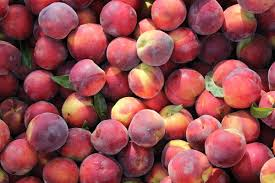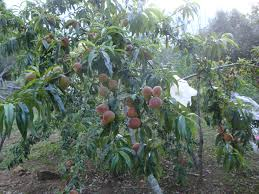Peach
Scientific Name: Prunus persica
Climate: Cold, warm, and warm to hot
Plant Description: The peach is a small tree that grows up to four to ten meters in height. It has a thin, gray trunk. The leaves are dark green in color and are elongated and pointed. The flowers grow in groups of two or three, although they can also grow alone. They have five petals and their color varies from white to pink. The fruit is hairy, round and is yellow and red in color.1
Cultivation: It can be sown from seed or grafted. It is recommended to sow at distances of six meters. It grows best in clay and sandy soils with good depth, well drained and in full sun.
It is important to prune the tree each year to stimulate growth and production. Pruning is generally done before the rainy season. Irrigation is important in dry seasons.
The first harvest is done three years after planting, reaching its maximum production between 12 and 15 years. The fruit is harvested by twisting carefully so as not to damage the fruit because it is very delicate.
 Uses: Peach is a tasty fruit that can be used in a variety of desserts, in juices and as jam.
Uses: Peach is a tasty fruit that can be used in a variety of desserts, in juices and as jam.
It works as an antioxidant and is very beneficial for the preservation of the skin. It has also been indicated in the treatment of different diseases including lung, stomach and liver diseases, ulcers, herpes, rheumatic pain, high blood pressure, anemia, diabetes, in addition to contributing to regularizing the nervous system.
Pests and Diseases: Curled leaf is a common problem. It can be treated by dissolving a kilo of Epsom salts and then mixing with ten liters of cold water. It is applied to the ground around the tree. You can also apply a mixture of soapy water to the affected leaves.
The aphid that attacks the peach in the spring is combated with an infusion of five cloves of garlic with a liter of water and then the affected parts are fumigated.
References:
En español: Durazno

